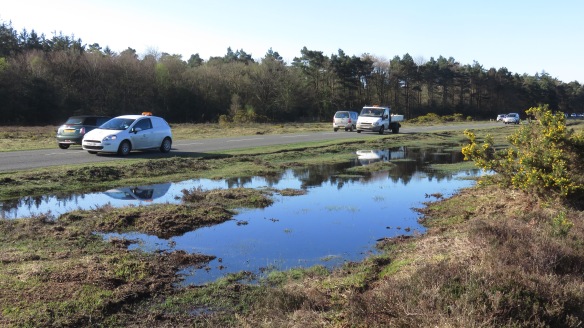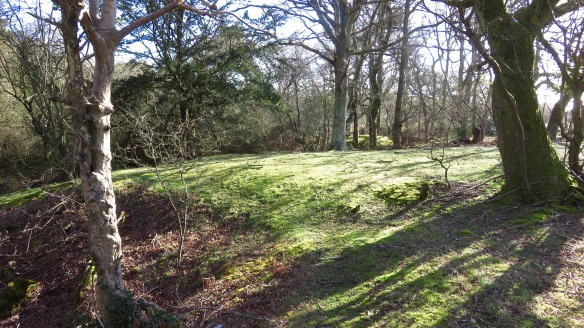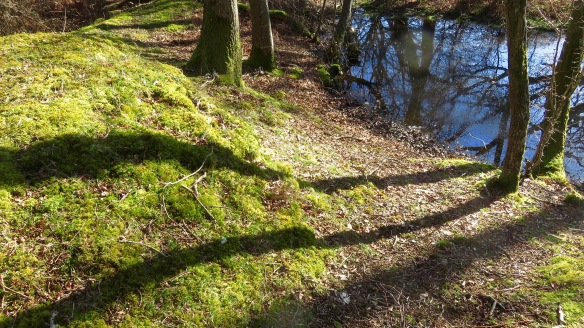IMAGES CAN BE ENLARGED BY CLICKING ON THEM – TWICE IF NECESSARY
As the golden dawn crept across the rape field on the other side of Christchurch Road that greets Jackie when she opens the bedroom curtains, she commandeered my camera to good effect.
From one of the back bedrooms she looked down onto the lead planter fashioned by Lucille Scott in the form of a wide-brimmed hat.
A little later, I photographed the clouds over the front of the house.
Drawn by the beautiful morning we took an early drive into the forest, where
ponies enjoyed a crisp breakfast;
and commuter traffic was reflected in the roadside pools.
Having dropped me off for me to take the above picture, Jackie drove on to a turning space, back-tracked, and parked on the edge of the woodland I was now investigating.
Slanting shadows slid across tumbling terrain and plunging pools, and
in haze on the other side of the road, gorse conversed with fresh arboreal plumage.
Further on, a pair of donkeys dozed on Norleywood village green
whilst another couple availed themselves of the street furniture to have a good scratch.
As we approached Lymington we passed a bluebell wood. Given that there is a fear that the stronger, less delicate, yet lighter hued Spanish breed will subsume our native stock, an indigenous collection is a welcome sight.
On our recent trips to and from The First Gallery, we have several times passed a short man-made pillar in a stretch of moorland bearing a number of signs bearing the word Hilltop. Pooling our combined smatterings of knowledge we realised this was what would be marked ‘trig point’ on the Ordnance Survey maps and was something to do with measuring height, presumably above sea level.
Jackie decided to research this today, and discovered that, according to BBC News, on this very date ‘Ordnance Survey (OS) is celebrating the 80th anniversary of the triangulation pillar, most often known as a “trig pillar” or “trig point” and a welcome sight to many a walker as they reach the peak of their walk.’
That, in fact, was the real reason we dashed out to catch our little pillar in the morning sunshine. The pillar wasn’t going anywhere, but the light, we knew, would change. As will be seen on the link below, OS no longer use these markers for their original purpose, but they remain helpful landmarks. Many also now bear decoration from the general public. What this particular set of graffiti signifies I do not know.
Each pillar bears an identification number.
Most cameras have a tripod mount into which the steadying instrument is screwed. The theodolite, the measuring device used by these early surveyors was clipped to a fitting on the top of the pillar,
here seen in its setting.
For anyone wishing to explore this subject further, I can heartily recommend
http://www.bbc.co.uk/news/in-pictures-36036561
which is lavishly illustrated by photographs, both historic and modern.
This evening we dined on Jackie’s succulent and spicy sausage casserole; creamy mashed potato; and crunchy carrots and Brussels sprouts. It is worthy of note that the sausages were Ferndene Farm Shop pork with chilli, which afforded a delicious piquancy. The Cook drank Blanche de Namur and I drank Reserve des Tuguets madiran 2012.

















